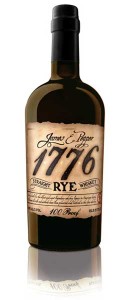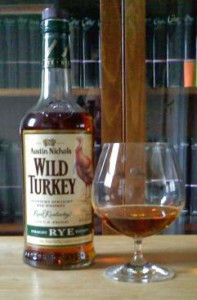Putting Together Interesting, Affordable Whiskey Flights For Home Tastings
By Richard Thomas
With whiskey trendier than ever before, more whiskey fans are introducing friends to their drink of choice in their own homes, taking the bar concept of the whiskey flight and building a tasting party around it.
The problem every tasting party host confronts is the painful pouring a large chunk out of their precious collection. A good tasting based on a theme will serve out four dram-sized (30 ml) portions. Just half a dozen people will drain a quarter from each of four bottles at that rate. Whiskey is for drinking and enthusiasts should be generous, but only the wealthy few won’t feel the bite from that if they try to improvise a tasting out of their personal favorites in the liquor cabinet.
Here we recommend a trio of thematic, interesting, and (most importantly) affordable whiskey flights. For each flight, you should be able to pick up all four bottles on a budget of approximately $100 or less.
The Bourbon Four
The “Bourbon Four” flight is designed as an introduction to the classic four mash bill, or grain recipe, variants of bourbon whiskey: standard, high-corn, high-rye and wheated.
Federal law mandates a mash bill of at least 51% corn for bourbon whiskey, and the standard mash bill calls for mostly corn with a portion of malted barley and a portion of rye. The malt is there chiefly to provide enzymes that convert grain starch into sugar and the rye is present for flavor, but other grains can be used in place of rye, and both the bedrock of corn and the malt have flavors of their own. Substitutions and adjustments in the mash bill therefore have an impact on how a bourbon tastes, and this flight explores how that works in practice.
- Jim Beam White: Don’t overlook the “benchmark of bourbons.” It’s easy drinking, sweetly priced, and as typical an example of bourbon whiskey as there is.
- Old Charter 8 Year Old: This bourbon comes from the cheap end of the line of products coming out of Buffalo Trace’s Mash Bill #1. The only thing Buffalo Trace officially says about this mash bill is that it is 10% rye or less, but doing the math means that it must be pushing 80% corn, making it the high-corn choice for the flight.
- Old Grand-Dad: At 63% corn and 27% rye, this bourbon serves as high-rye entry.
- Larceny: This is the “wheater” bourbon in this mix, where wheat replaces rye in the mash bill. This particular wheated choice amps up the wheat content of the bourbon to 20%, so the qualities of the wheat will really stand out.
The 100-Proof Rye Progression
This flight takes the mash bill idea behind the Bourbon Four and focuses squarely on rye, moving from normal bourbon to high-rye to normal rye whiskey to high-rye rye whiskey.
- Very Old Barton 100 Proof: With 75% corn, 15% rye and 10% malt, this bourbon has a typical mash bill and serves as the starting point. It is also in keeping with the strength of the following entries, while at the same time not busting the budget the way a choice like Knob Creek might.
- Old Grand-Dad Bonded: The same high-rye mash bill as the basic Old Grandad listed above, but stepped up to meet the four year old, 100-proof standards of the Bottled in Bond Act.
- Rittenhouse Rye: This is a 100-proof example of a 51% rye mash bill whiskey. Thus, Rittenhouse keeps in step with the strength of the series, while at the same time just crossing the threshold from bourbon into rye.
- James E. Pepper 1776 Rye: Taking the rye content to the top in the progression is this whiskey, one of the many sourced from MGP’s 95% rye stock. It’s also the only one of those 95% ryes that checks off all three of these boxes: 1) widely available; 2) reasonably priced; and 3) bottled at 100 proof.
The American Series
There is much more to American whiskey than just bourbon or even rye. Since all major American whiskeys types are aged in new white oak, defining the different branches boils down to what the dominant grain is. As described above, bourbon is mostly corn, whereas rye, wheat and American malt whiskey are instead dominated by those namesake grains. This flight lines up those four American whiskeys types.
The main problem with doing all four of the American whiskeys by grain—bourbon, rye, wheat and malt—is that there are no truly cheap examples of American malt and wheat whiskeys out there. Not to worry, because with this series we did the price juggling for you.
- Evan Williams: A fine staple bourbon that is slightly older and slightly stronger than Jim Beam White. It is also slightly cheaper, which helps offset the cost of picking up an American malt and a wheat whiskey.
- Pearse Lyons Reserve: This American malt whiskey comes from Town Branch Distillery, and what is in the bottle is currently in transition from sourced whiskey to Town Branch’s own spirit. There are American malts out there that grab far more headlines, but those are pricey craft whiskeys. Pearse Lyons is a very drinkable alternative in this category, and one that won’t bust your four-bottle, $100 budget.
- Bernheim 7 Year Old: The original wheat whiskey of modern times, this Heaven Hill classic is also one of a handful of whiskeys that bucked the trend of dropping an age statement by actually adding that “seven year old” bit. It is also the most affordable wheat whiskey around.
- Wild Turkey 101 Rye: Among rye whiskey diehards, Wild Turkey 101 Rye is a classic favorite. This is so much the case that it was withdrawn from the market between 2012 and 2014, as the rye craze hit its peak and caused a genuine shortage. Now it’s back, making it an obvious choice for an exemplar American rye.
 The Whiskey Reviewer A World of Whiskey, Poured Every Weekday
The Whiskey Reviewer A World of Whiskey, Poured Every Weekday



Good information there so I can work my way through the different types of bourbon available.
Pity they aren’t all easy to get hold of on the other side of the Atlantic.